



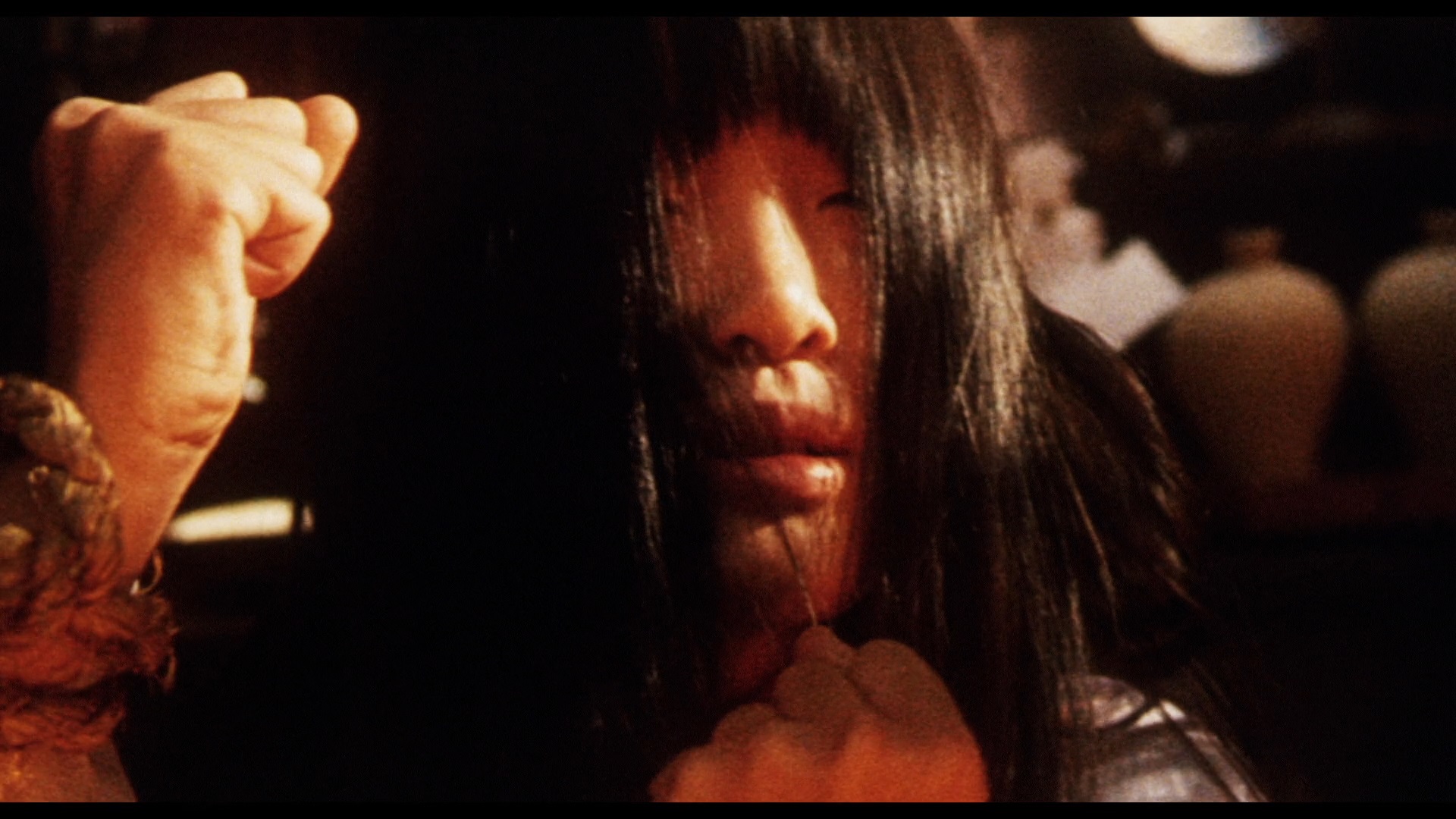 until films like Saw upended things starting in 2004, nothing defined the horror genre at the start of the
until films like Saw upended things starting in 2004, nothing defined the horror genre at the start of the  new millennium as profoundly as Japanese cinema. Referred to by many fans and critics as "J-horror," the wave turned out numerous bona fide classics like Ring, Audition, Pulse, Ju-on: The Grudge, Cure, and Dark Water. In turn, these films inspired numerous American remakes and imitations as well as similar efforts out of South Korea and Hong Kong, resulting in a heavy glut of titles that slowed things down considerably by 2010 or so. As a consequence, several worthwhile Japanese titles got widespread home video releases but tended to get lost in the shuffle, rarely spoken about today but worth seeking out for their own unique contributions to the cycle. Seven of these were gathered by Arrow Video in a 2024 Blu-ray set, J-Horror Rising, reviving titles that had been lurking in the dark since their initial DVD releases. The set also comes with an illustrated booklet featuring new writing by Eugene Thacker, Jasper Sharp, Anton Bitel, Amber T., Mark Player, Jim Harper and Sarah Appleton, plus a double-sided foldout poster with new art by John Conlon.
new millennium as profoundly as Japanese cinema. Referred to by many fans and critics as "J-horror," the wave turned out numerous bona fide classics like Ring, Audition, Pulse, Ju-on: The Grudge, Cure, and Dark Water. In turn, these films inspired numerous American remakes and imitations as well as similar efforts out of South Korea and Hong Kong, resulting in a heavy glut of titles that slowed things down considerably by 2010 or so. As a consequence, several worthwhile Japanese titles got widespread home video releases but tended to get lost in the shuffle, rarely spoken about today but worth seeking out for their own unique contributions to the cycle. Seven of these were gathered by Arrow Video in a 2024 Blu-ray set, J-Horror Rising, reviving titles that had been lurking in the dark since their initial DVD releases. The set also comes with an illustrated booklet featuring new writing by Eugene Thacker, Jasper Sharp, Anton Bitel, Amber T., Mark Player, Jim Harper and Sarah Appleton, plus a double-sided foldout poster with new art by John Conlon.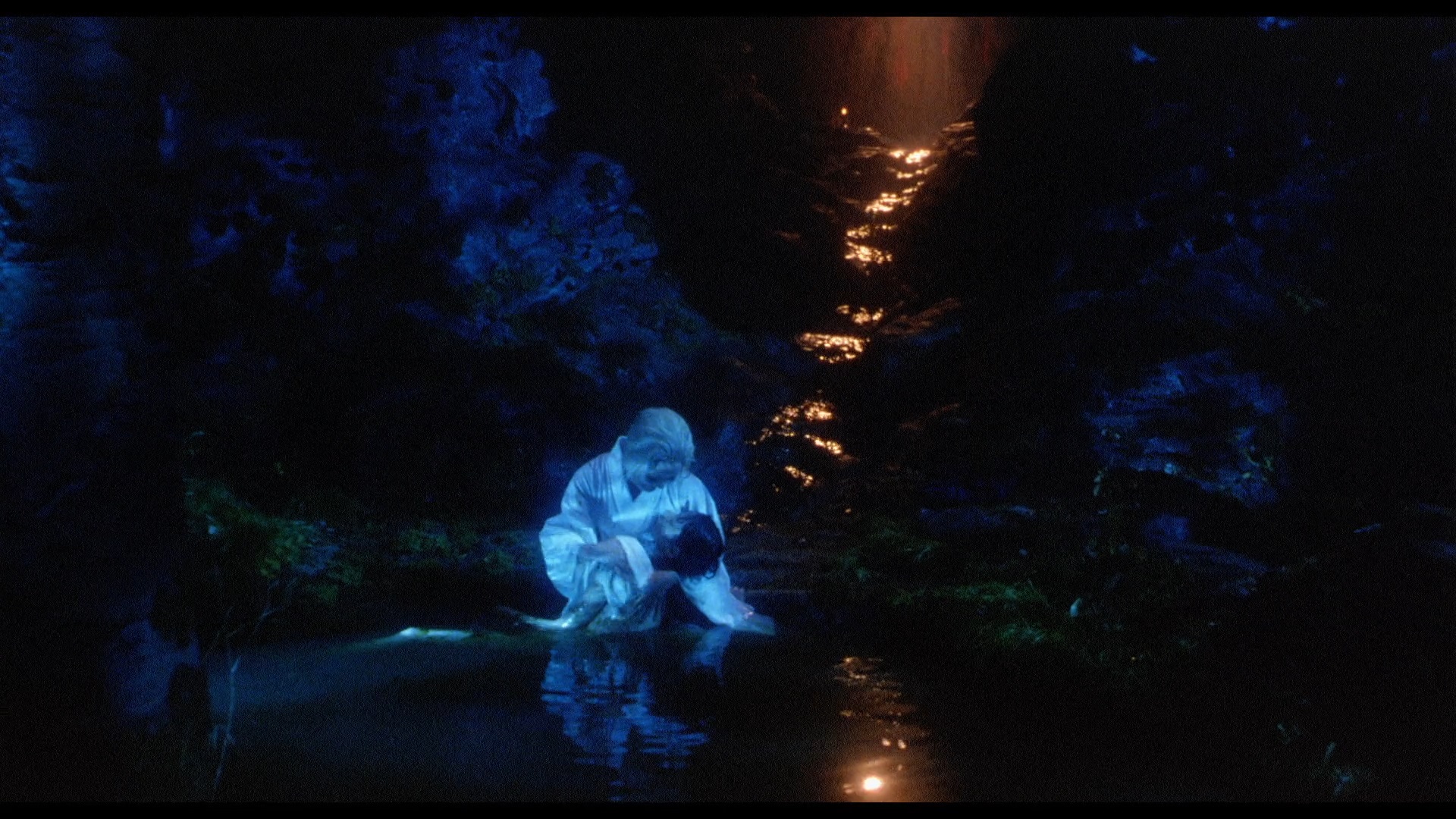 up on disc one is Shikoku, an early post-Ring entry and the one title here that fits into the horror category the
up on disc one is Shikoku, an early post-Ring entry and the one title here that fits into the horror category the  least. More of a dark supernatural fantasy, it follows the odyssey of Hinako (Natsuawa) who returns home to the town of the title where she was once best friends with two other children. She's shocked to learn that one of them, Sayori, drowned quite a while ago under mysterious circumstances that have apparently taken a major mental toll on her occult-fixated mother, Teruko (Negishi). Hinako teams up with her other reunited friend, Fumiya (Tsutui), to unravel what's going on as mysterious clues indicate Sayori might still be involved in their lives. Unlike the malicious long-haired female wraiths common to many films of this kind, Shikoku goes in a somewhat different direction with a more complicated and human take on the afterlife; anyone who's been separated from their childhood home and friends should find some connection here in an experience that's more wistful and eerie than terrifying. Veteran cinematographer Noboru Shinoda also makes sure this is a truly gorgeous film to behold with striking landscape shots and atmospheric cave interiors, while director Shunichi Nagasaki uses sound (arguably the most
least. More of a dark supernatural fantasy, it follows the odyssey of Hinako (Natsuawa) who returns home to the town of the title where she was once best friends with two other children. She's shocked to learn that one of them, Sayori, drowned quite a while ago under mysterious circumstances that have apparently taken a major mental toll on her occult-fixated mother, Teruko (Negishi). Hinako teams up with her other reunited friend, Fumiya (Tsutui), to unravel what's going on as mysterious clues indicate Sayori might still be involved in their lives. Unlike the malicious long-haired female wraiths common to many films of this kind, Shikoku goes in a somewhat different direction with a more complicated and human take on the afterlife; anyone who's been separated from their childhood home and friends should find some connection here in an experience that's more wistful and eerie than terrifying. Veteran cinematographer Noboru Shinoda also makes sure this is a truly gorgeous film to behold with striking landscape shots and atmospheric cave interiors, while director Shunichi Nagasaki uses sound (arguably the most 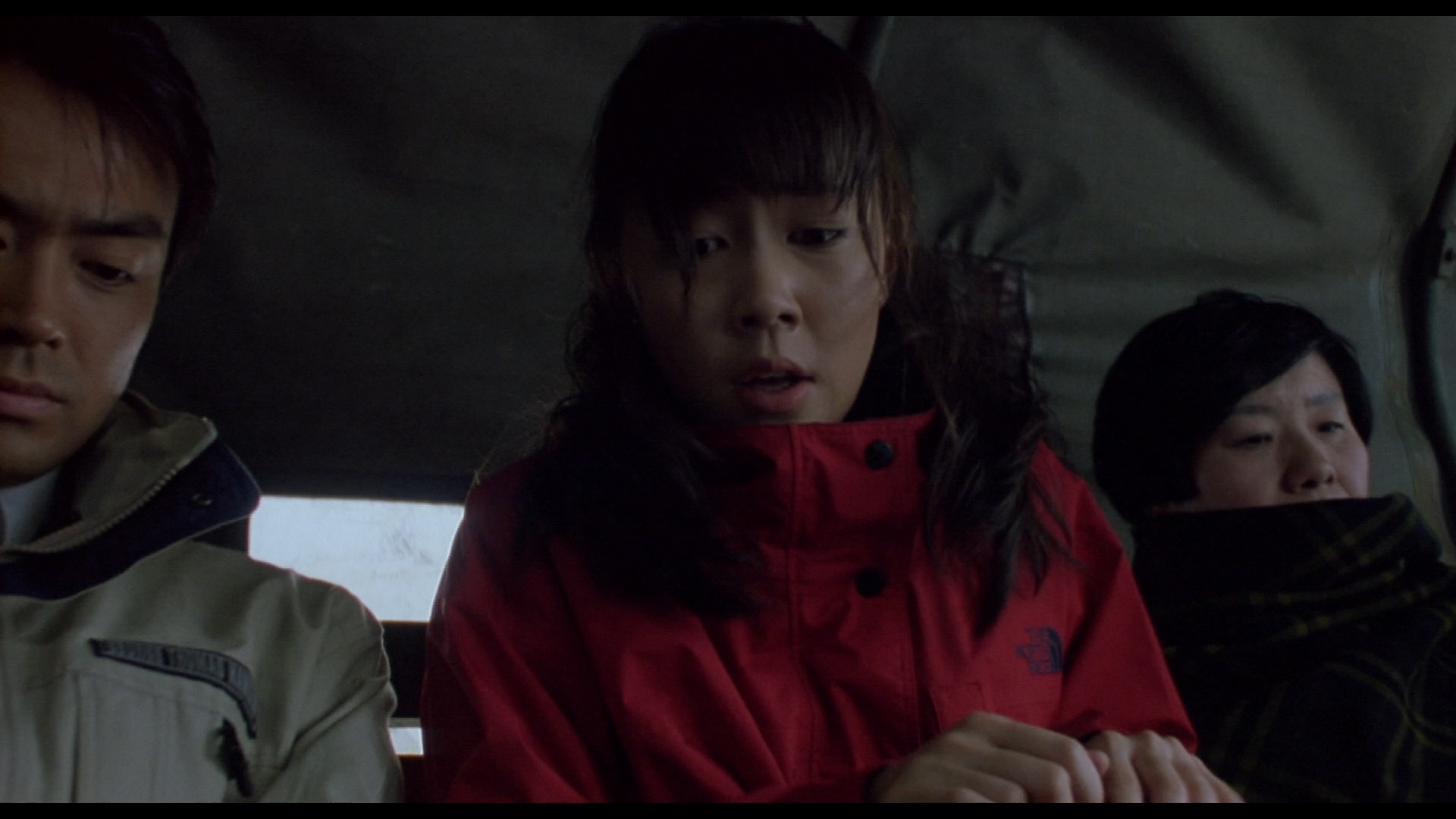 important element of most J-horror films) to keep you constantly engaged with the
important element of most J-horror films) to keep you constantly engaged with the 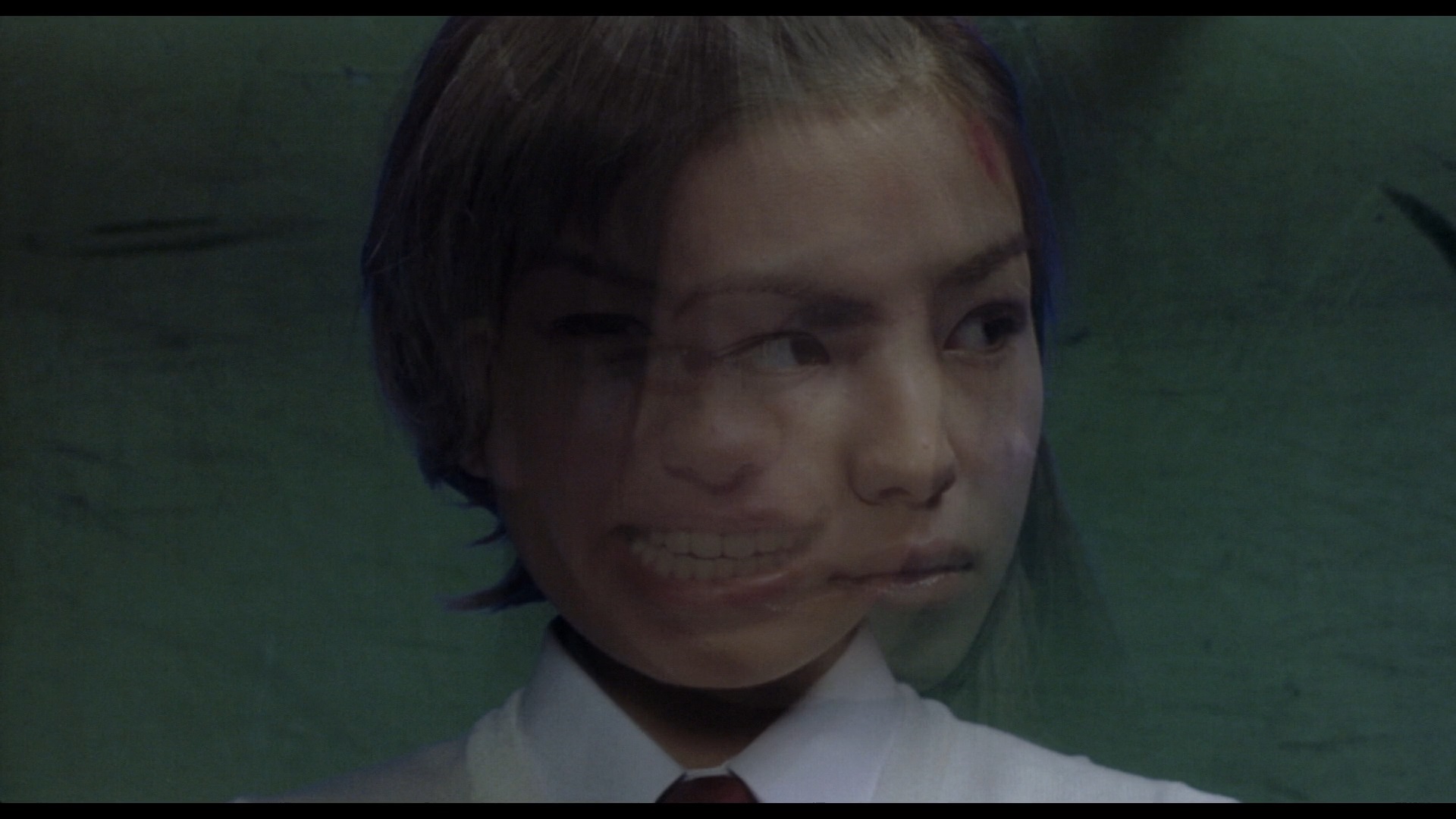 material.
material. international releases, but they look much better than ever before here with very detailed transfers that
international releases, but they look much better than ever before here with very detailed transfers that 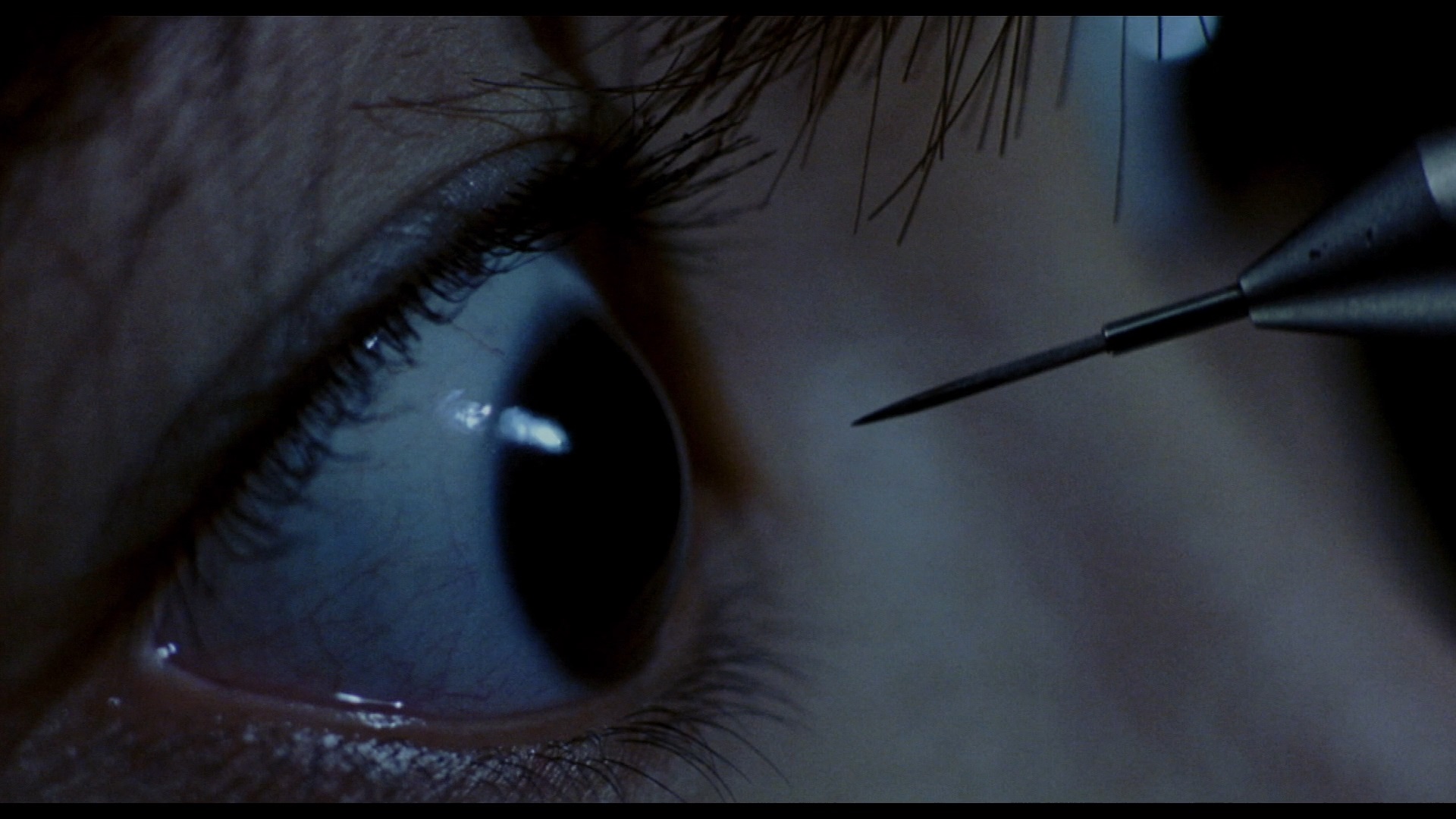 also correct the black levels to the intended deep, rich look that's been largely absent before. As with all but one of the other titles in this Blu-ray set, they each have DTS-HD MA 5.1 and 2.0 Japanese mixes with optional English subtitles. Each features a new audio commentary as well; the always reliable Tom Mes does the honors for Shikoku, breaking down its cultural references, the history of the locale, and the film's place in the first wave of J-horror, among other subjects. Then Jasper Sharp and Amber T. join forces for an in-depth and rewarding dive into Isola talking about the earthquake, the merging of psychic and ghost story tropes, connections to other genre films around that time, and the relationship between theatrical and home video audiences. In "The Aftermath" (23m53s), Mes explains how the J-horror boom rose out of the 1990s home video market when Toho dominated the local theatrical market, with horror proving to be an affordable and effective way of tapping into social anxieties and folklore in a way that resonated far and wide. "Something in the Water" (22m54s) is a new interview with Shikoku's Nagasaki about how he approached layering the film's narrative secrets, the decision to shoot on location in the titular location after finding just the right village, and the process of organizing the shoot. Ported over from earlier editions are short archive interviews with Nagasaki (3m47s) and actors Chiaki Kuriyama (2m15s) and Yui Natsukawa (3m34s), while Isola has archive interviews with actors Yoshino Kimura (1m44s) and Yu Kurosawa (1m32s). Then you get some raw production footage of the filming of Shikoku (3m27s) and Isola (2m45s), a trailer for Isola paired with Ring 0, and a Shikoku trailer (paired with Ring 2) and two TV spots plus image galleries for both films.
also correct the black levels to the intended deep, rich look that's been largely absent before. As with all but one of the other titles in this Blu-ray set, they each have DTS-HD MA 5.1 and 2.0 Japanese mixes with optional English subtitles. Each features a new audio commentary as well; the always reliable Tom Mes does the honors for Shikoku, breaking down its cultural references, the history of the locale, and the film's place in the first wave of J-horror, among other subjects. Then Jasper Sharp and Amber T. join forces for an in-depth and rewarding dive into Isola talking about the earthquake, the merging of psychic and ghost story tropes, connections to other genre films around that time, and the relationship between theatrical and home video audiences. In "The Aftermath" (23m53s), Mes explains how the J-horror boom rose out of the 1990s home video market when Toho dominated the local theatrical market, with horror proving to be an affordable and effective way of tapping into social anxieties and folklore in a way that resonated far and wide. "Something in the Water" (22m54s) is a new interview with Shikoku's Nagasaki about how he approached layering the film's narrative secrets, the decision to shoot on location in the titular location after finding just the right village, and the process of organizing the shoot. Ported over from earlier editions are short archive interviews with Nagasaki (3m47s) and actors Chiaki Kuriyama (2m15s) and Yui Natsukawa (3m34s), while Isola has archive interviews with actors Yoshino Kimura (1m44s) and Yu Kurosawa (1m32s). Then you get some raw production footage of the filming of Shikoku (3m27s) and Isola (2m45s), a trailer for Isola paired with Ring 0, and a Shikoku trailer (paired with Ring 2) and two TV spots plus image galleries for both films. 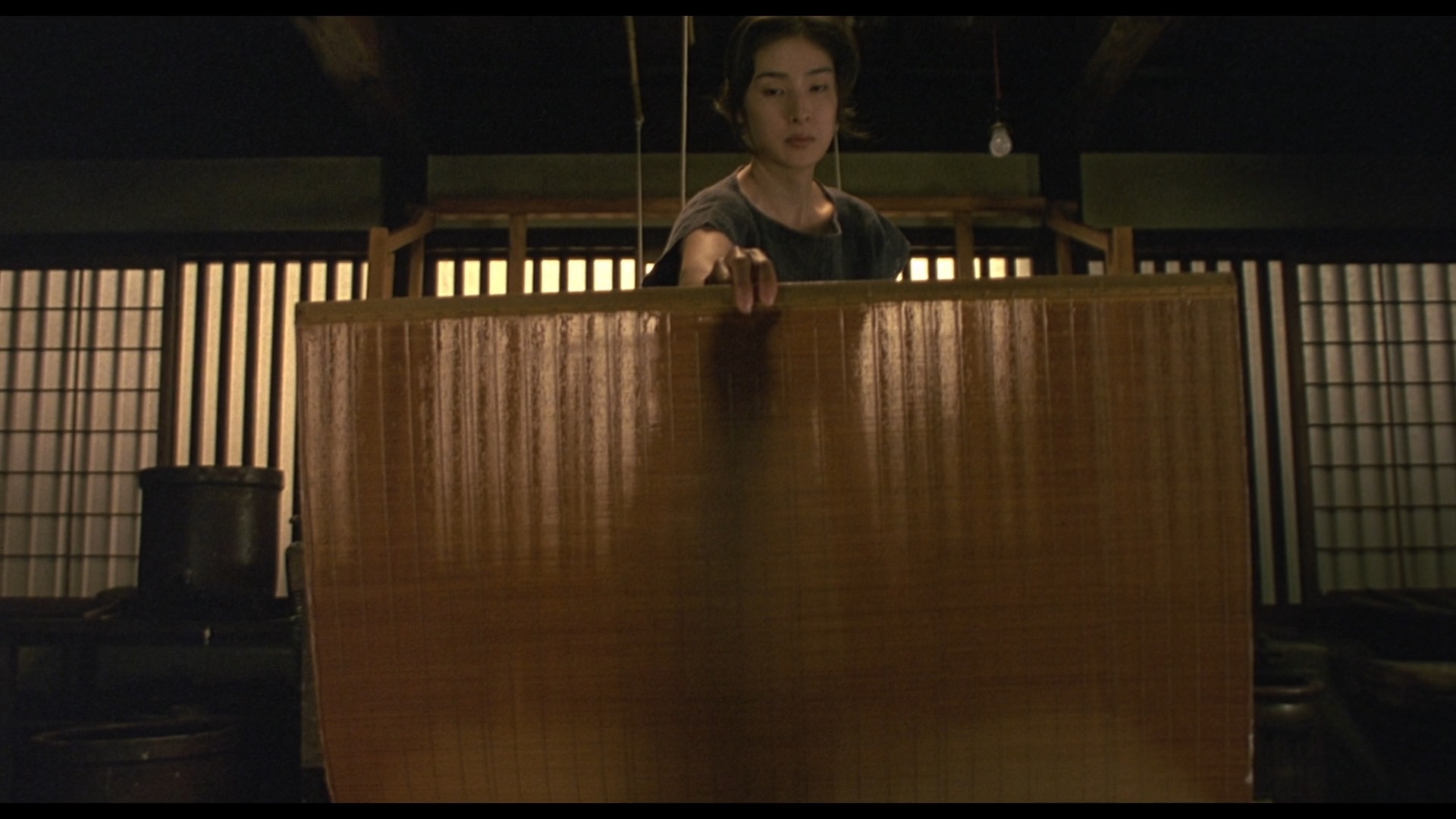 Disc two kicks off with 2001's Inugami, another one from that
Disc two kicks off with 2001's Inugami, another one from that  Adness stable on DVD and a fixture on video store shelves for a while. In an isolated mountain village of Omine, middle-aged Miki (Amami) works as a papermaker and tends to the needs of her family, the Bonomiyas, a reclusive clan who, according to town legend, are responsible for controlling the inugami (or evil dog spirits) which once threatened the town. As the annual rites of the ancestors approach, she meets traveling school teacher Akira (Harada) and soon makes love with him during a rainy downpour inside a nearby cave... while eerie dog howling can be heard outside. Soon mysterious disasters befall the village and Miki seems to magically grow younger by the day, as Akira comes to realize that his own family, located in a nearby village, may be connected to the strange Bonomiyas and their supernatural connection to the well-being of their people.
Adness stable on DVD and a fixture on video store shelves for a while. In an isolated mountain village of Omine, middle-aged Miki (Amami) works as a papermaker and tends to the needs of her family, the Bonomiyas, a reclusive clan who, according to town legend, are responsible for controlling the inugami (or evil dog spirits) which once threatened the town. As the annual rites of the ancestors approach, she meets traveling school teacher Akira (Harada) and soon makes love with him during a rainy downpour inside a nearby cave... while eerie dog howling can be heard outside. Soon mysterious disasters befall the village and Miki seems to magically grow younger by the day, as Akira comes to realize that his own family, located in a nearby village, may be connected to the strange Bonomiyas and their supernatural connection to the well-being of their people.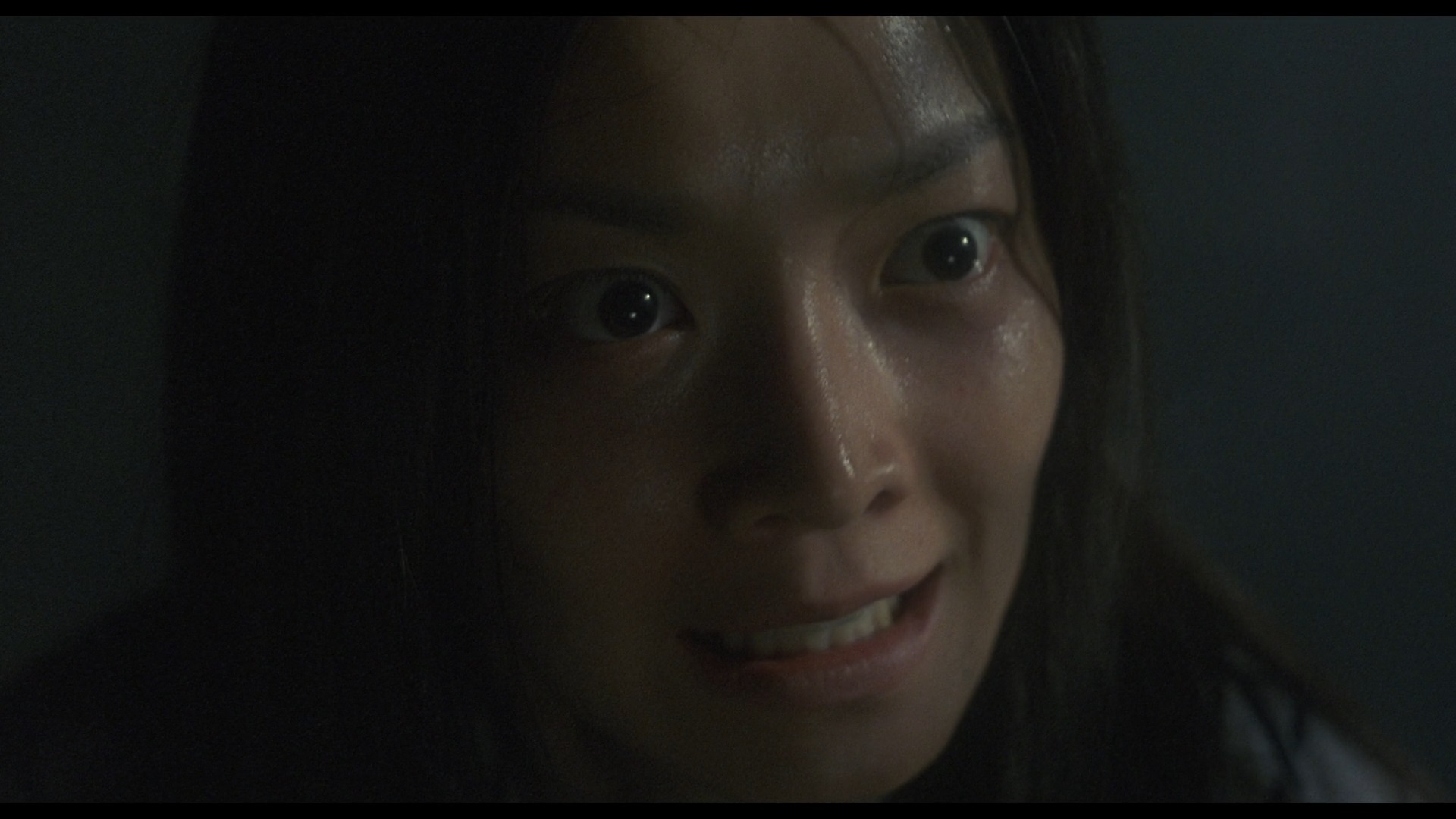 dollops on enough storylines
dollops on enough storylines 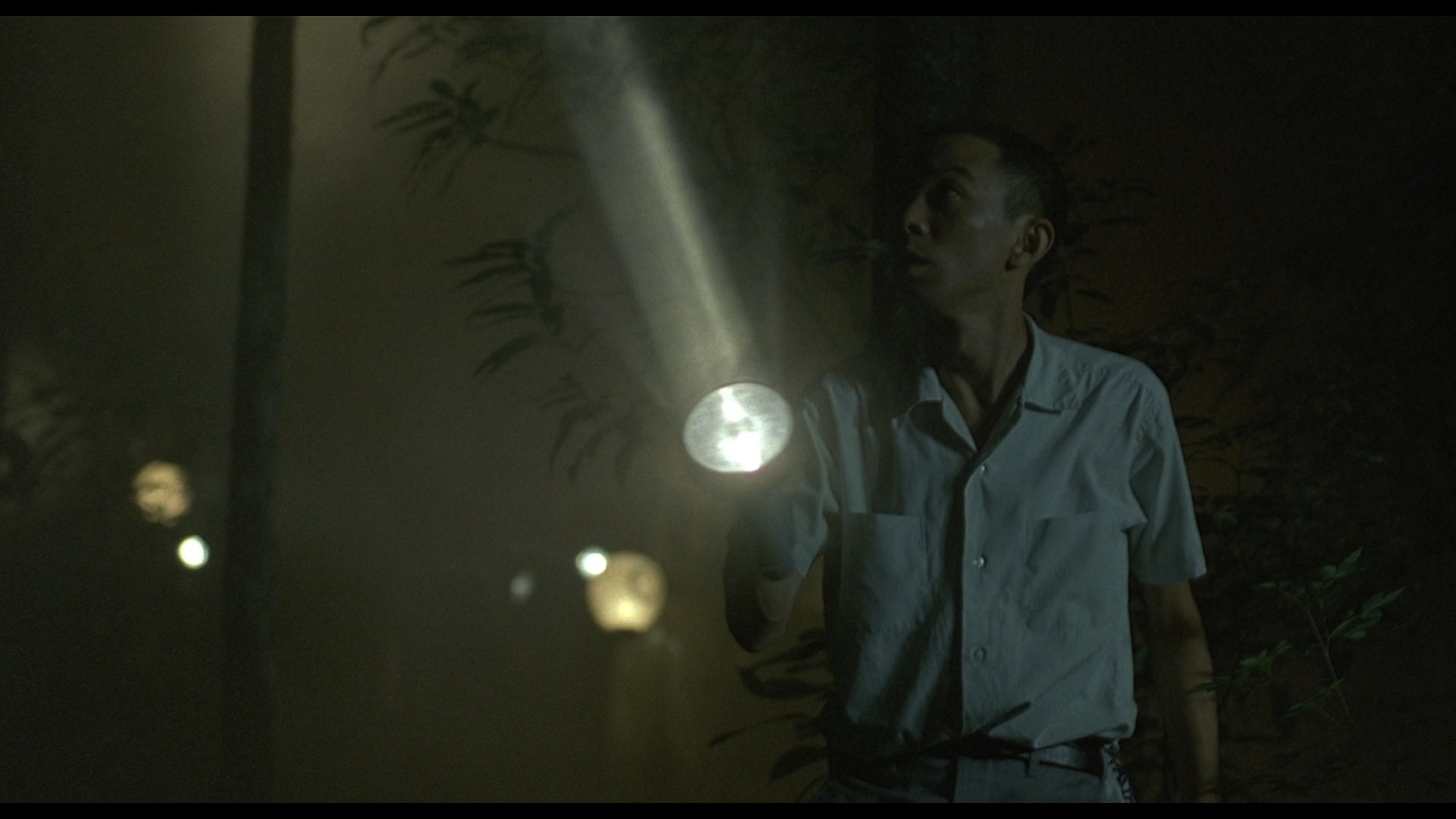 and characters to merit keeping a checklist to avoid confusion. It's all beautifully shot and makes excellent use of the lush, verdant locales, sometimes recalling Herzog in its sense of the commingling of nature and human mysticism. As with many of its ilk, Inugami seems less concerned with untying all of its narrative knots and instead strives for a heady atmosphere of organic sensuality, coupled with jolts of grotesquerie and nods to modern technology that somehow manage to stay within the tone of the overall film. Drawing on established tropes of Japanese mythology, the film never ventures into the truly macabre (which may frustrate viewers expecting a more traditional Japanese frightfest) but does offer its own subdued charms for those willing to go along with its deliberate rhythms.
and characters to merit keeping a checklist to avoid confusion. It's all beautifully shot and makes excellent use of the lush, verdant locales, sometimes recalling Herzog in its sense of the commingling of nature and human mysticism. As with many of its ilk, Inugami seems less concerned with untying all of its narrative knots and instead strives for a heady atmosphere of organic sensuality, coupled with jolts of grotesquerie and nods to modern technology that somehow manage to stay within the tone of the overall film. Drawing on established tropes of Japanese mythology, the film never ventures into the truly macabre (which may frustrate viewers expecting a more traditional Japanese frightfest) but does offer its own subdued charms for those willing to go along with its deliberate rhythms.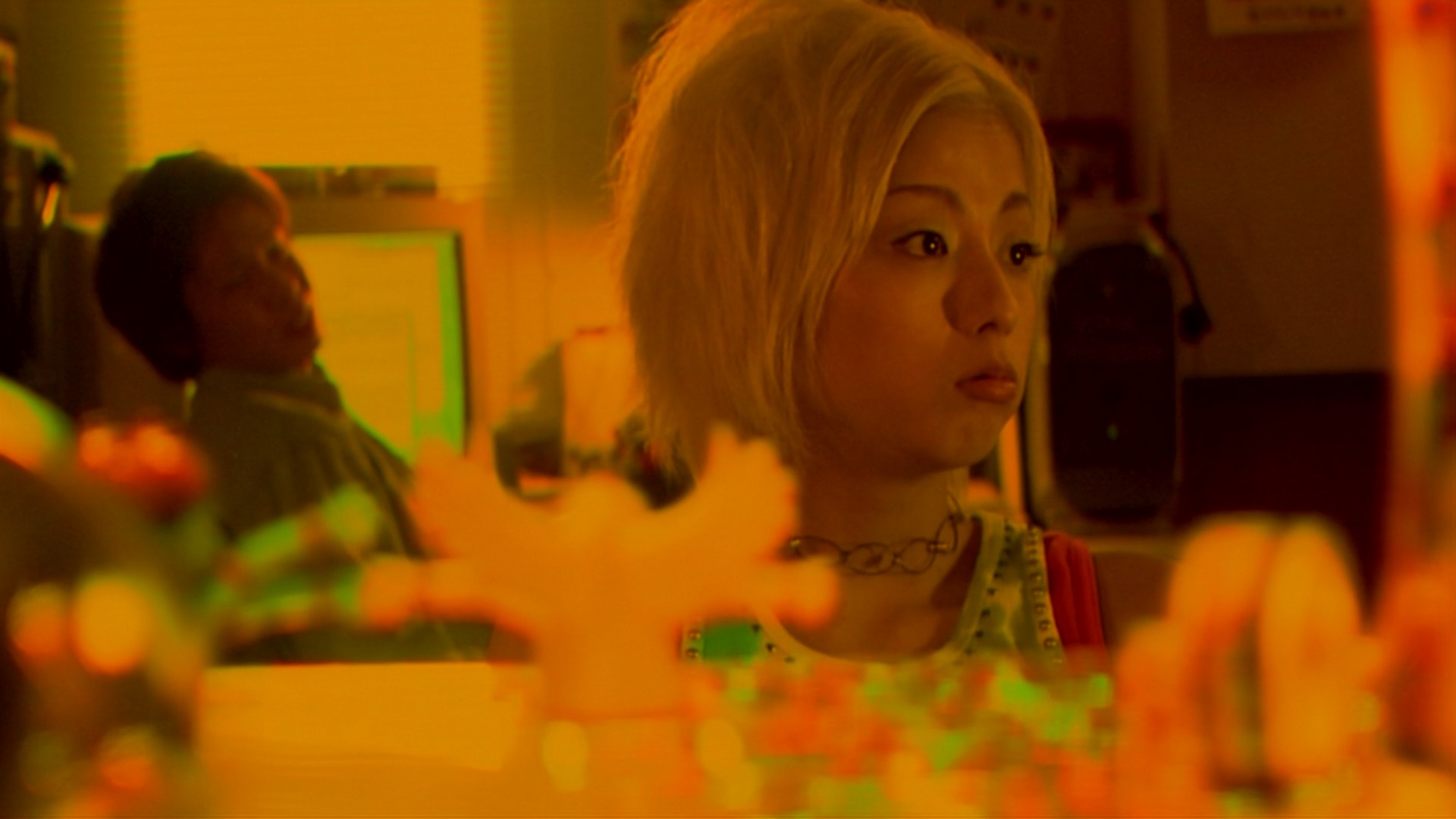 different in every way is the other film on disc two: St. John's Wort, a sort of cinematic spin-off from
different in every way is the other film on disc two: St. John's Wort, a sort of cinematic spin-off from 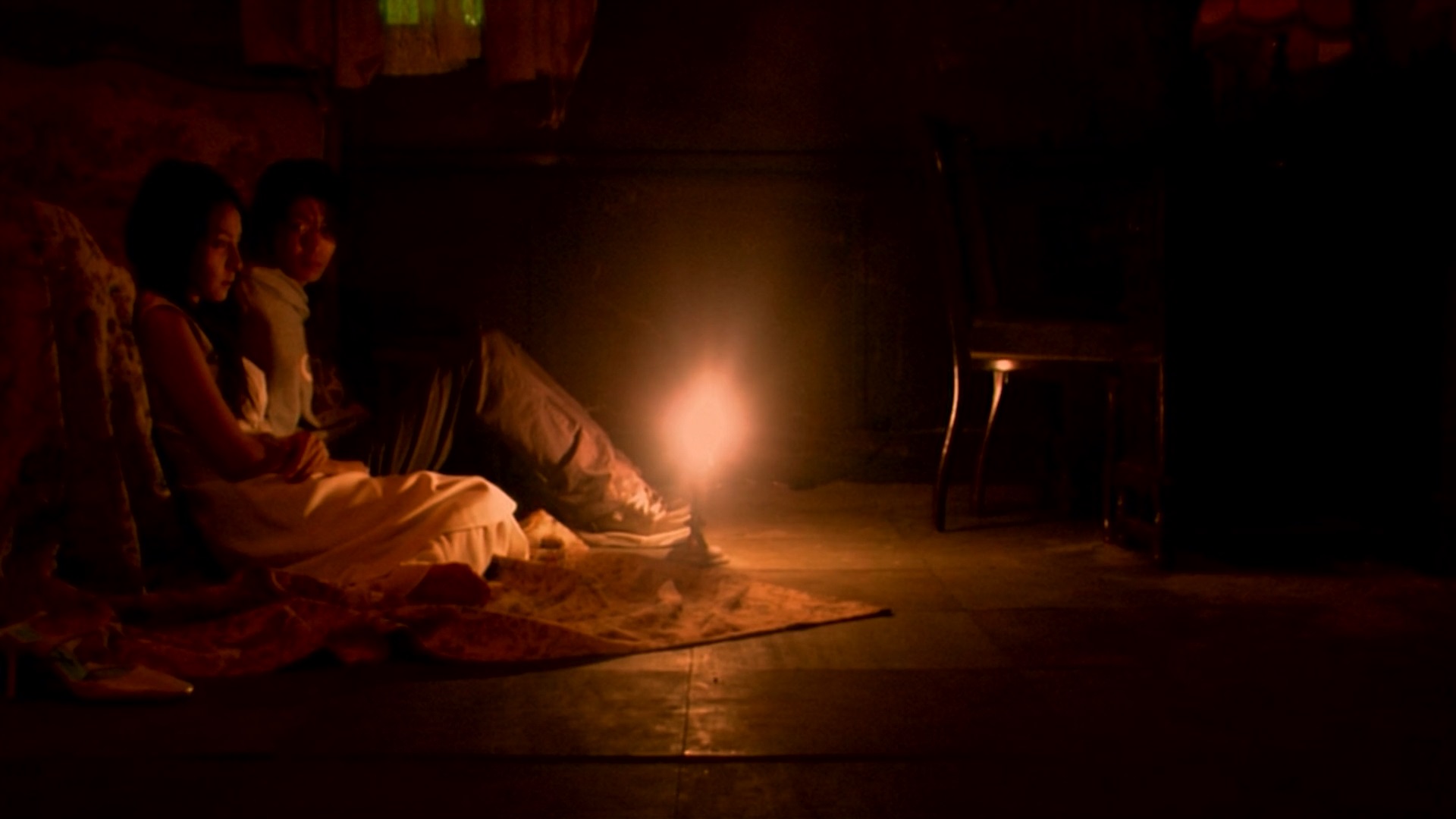 the '90s Japanese horror video game of the same name. Shot in a very extreme, stylized method that makes Wong Kar-wai look drab, it's a very hi-tech spin on a haunted story as video game artist and model Nami (Ju-on: The Grudge's Okina) and game designer on-and-off boyfriend Kohei (Saito) decide to scope out the creepy old house where she was born and which seems to be connected to her recurring eerie dreams. The plan is to use the place to create backgrounds for the new St. John's Wort video game with the rest of the tech crew back at the office, but of course, things get uncanny very quickly as the house's secrets start spilling out and infiltrating the potential game.
the '90s Japanese horror video game of the same name. Shot in a very extreme, stylized method that makes Wong Kar-wai look drab, it's a very hi-tech spin on a haunted story as video game artist and model Nami (Ju-on: The Grudge's Okina) and game designer on-and-off boyfriend Kohei (Saito) decide to scope out the creepy old house where she was born and which seems to be connected to her recurring eerie dreams. The plan is to use the place to create backgrounds for the new St. John's Wort video game with the rest of the tech crew back at the office, but of course, things get uncanny very quickly as the house's secrets start spilling out and infiltrating the potential game.  toes all the way to obligatory
toes all the way to obligatory  sting in the tale ending.
sting in the tale ending. 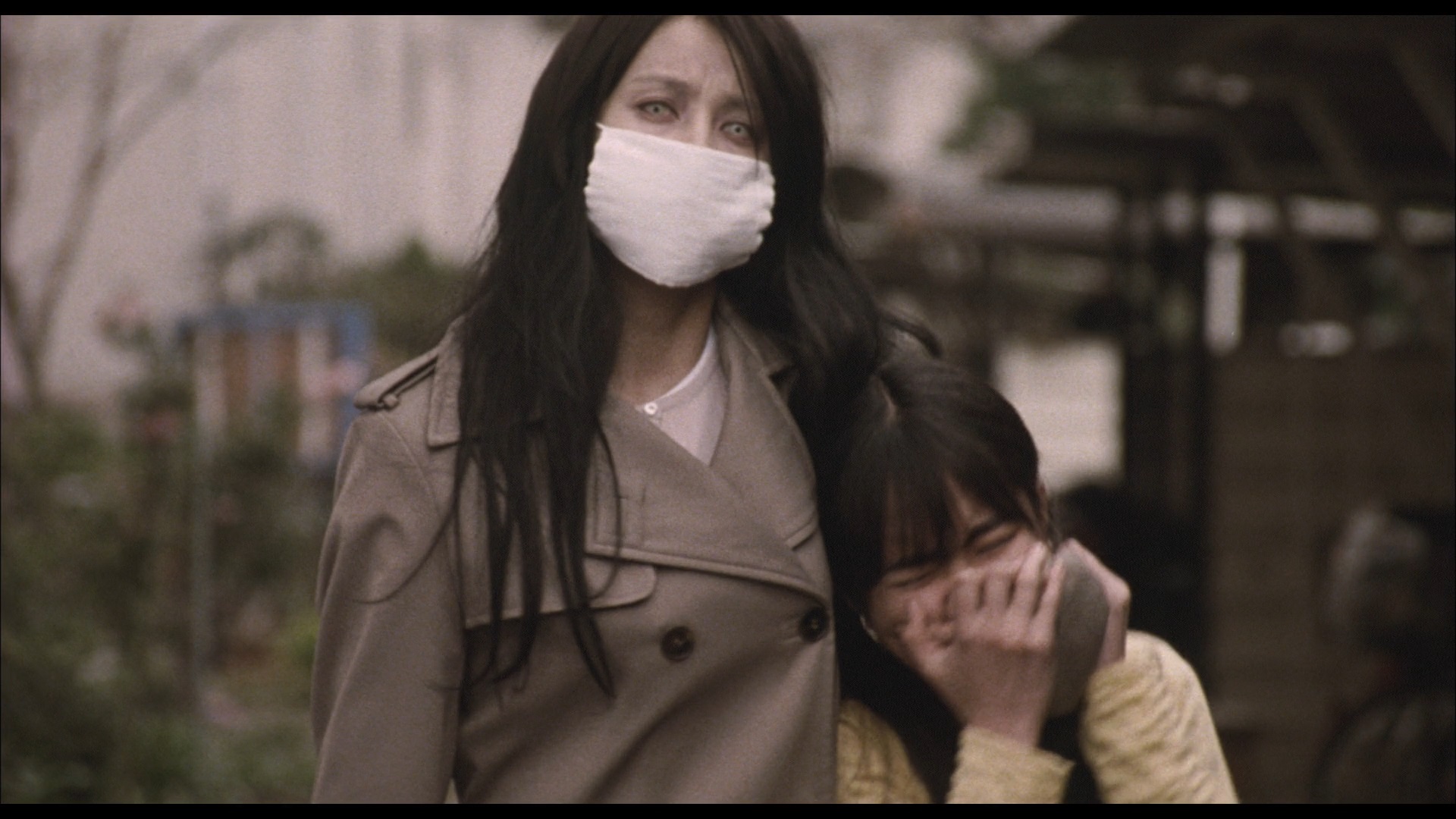 of St. John's Wort (21m51s), four TV spots (one paired with Inugami), and image galleries for both
of St. John's Wort (21m51s), four TV spots (one paired with Inugami), and image galleries for both  films.
films.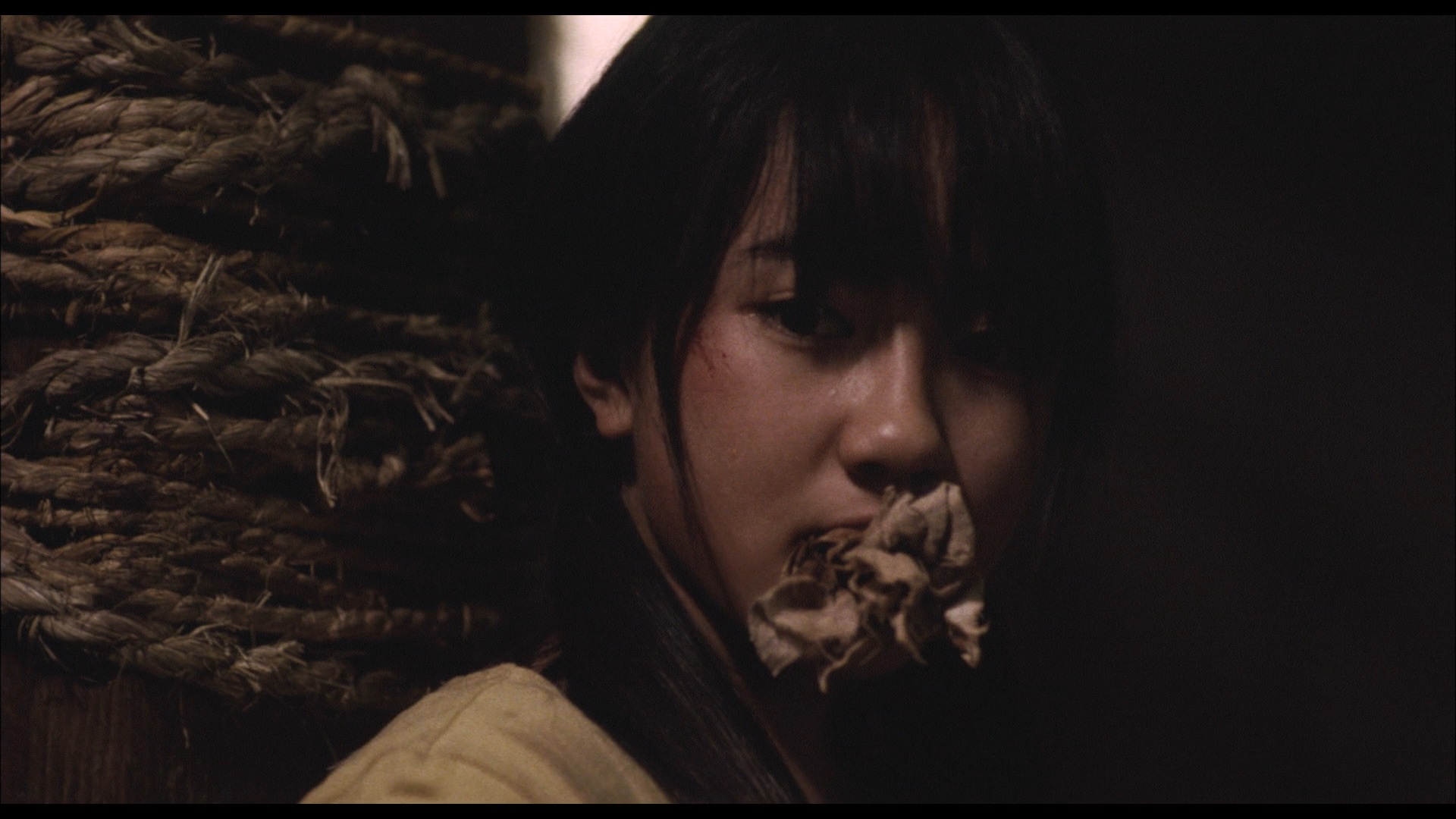 probing into the crimes and make several disturbing discoveries, including the true nature of the assailant and its connection to Noboru's
probing into the crimes and make several disturbing discoveries, including the true nature of the assailant and its connection to Noboru's 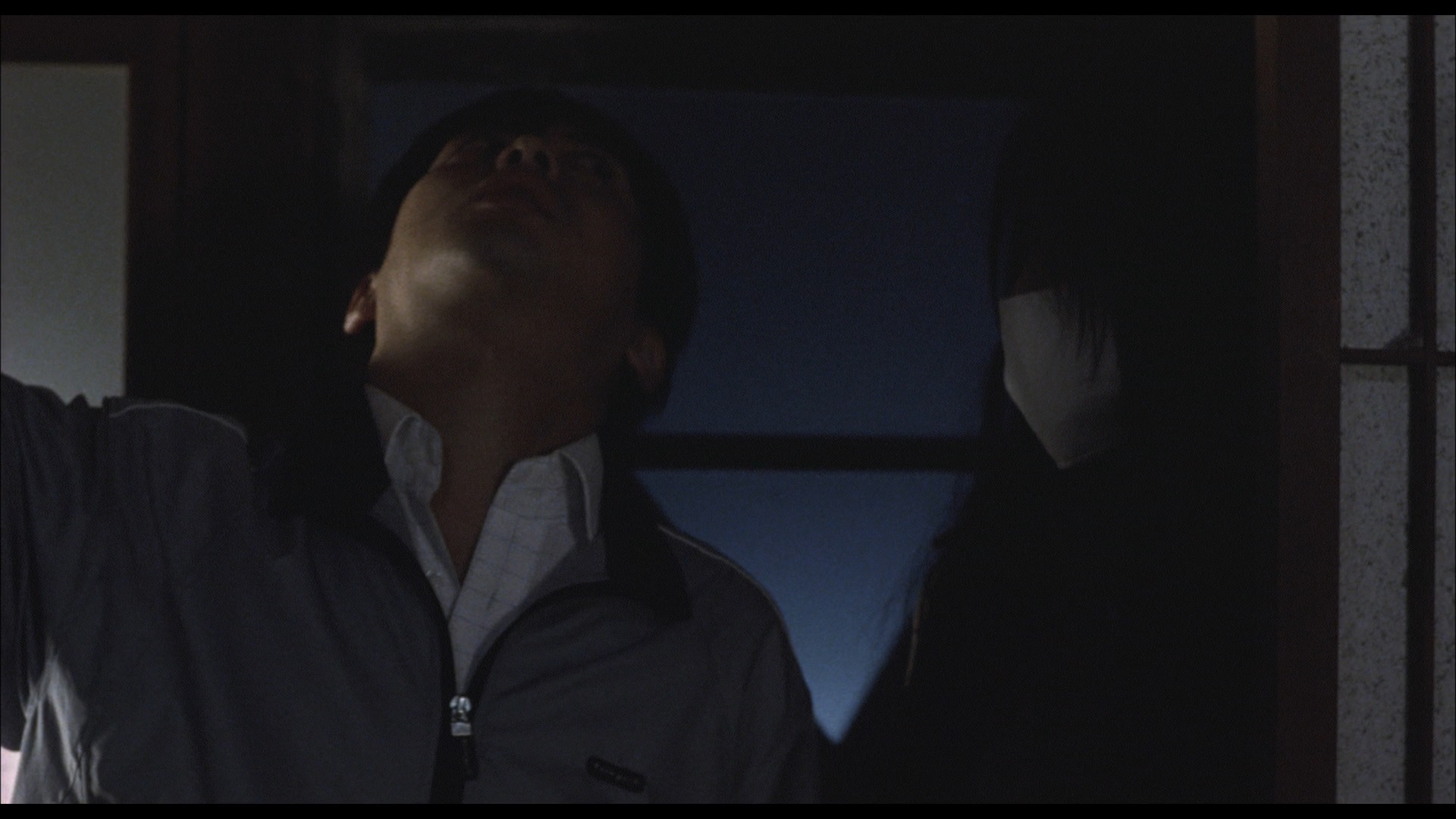 past.
past.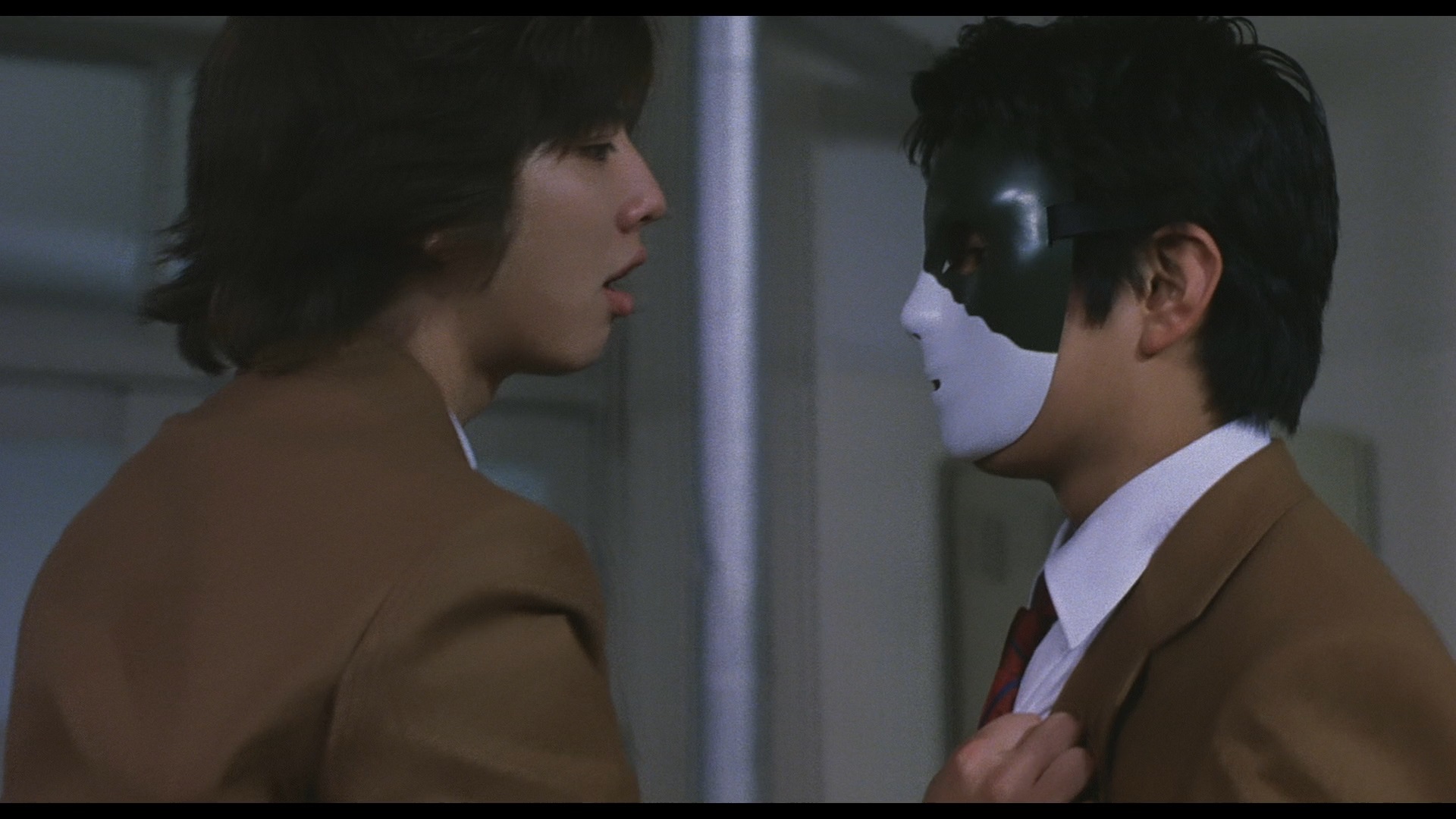 entire personality to change to a more aggressive one. From there two plot strands develop as
entire personality to change to a more aggressive one. From there two plot strands develop as  students Yuki (Kurosu) and Ashihara (Ishigaki) become involved in a murder at a party and an investigation into a mysterious mask maker, while the modeling world becomes fixated on the mask idea and spreads it out to the wider public.
students Yuki (Kurosu) and Ashihara (Ishigaki) become involved in a murder at a party and an investigation into a mysterious mask maker, while the modeling world becomes fixated on the mask idea and spreads it out to the wider public. 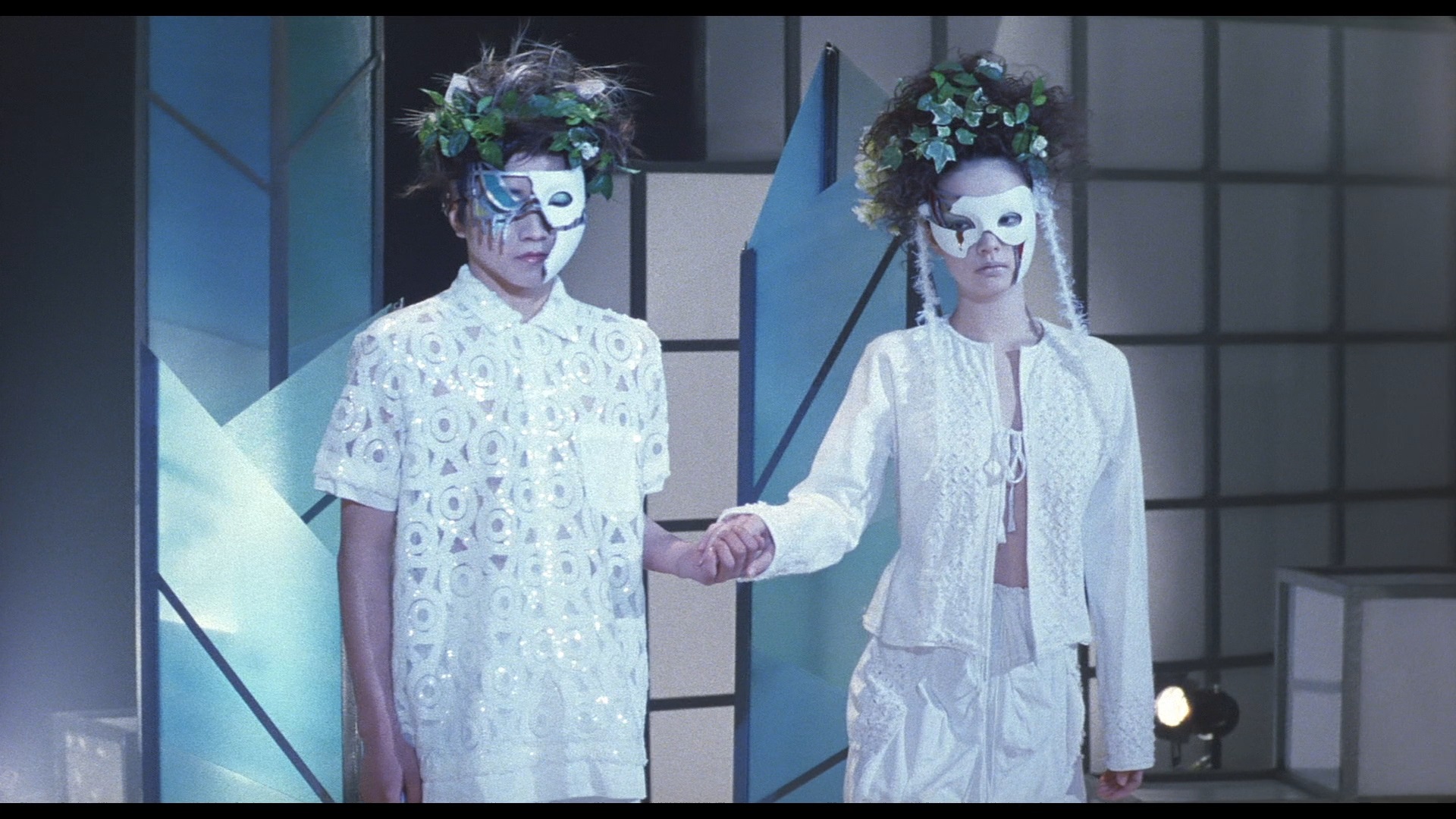 They're both very stylish at times,
They're both very stylish at times,  with Persona in particular going crazy with colorful lighting and costumes that make it a real joy to watch at times. Carved, which has had an extensive video history including its releases from Tartan at the label's height turning out Japanese genre fare, gets the usual 5.1 and 2.0 options while Persona is the only one with just a 2.0 stereo mix; it's obvious that one was the lowest priority here as it's also the only one without a commentary. On Carved you get a new commentary by Zack Davisson discussing many cultural aspects of the film including classroom setups, the types of police, the background of the story, the folklore aspects (his specialty), and the thousands of yokai throughout Japanese history that have populated scary stories. "Why So Serious?" (18m40s) features Carved director Koji Shiraishi talking about the fame of the source urban legend, his recruiting to make this film, the backstory scene added to avoid the title character seeming ridiculous, and much more. In "Weapon of Choice" (16m56s), Lindsay Nelson focuses on the dual strains of Shiraishi's filmmaking, the role of folklore and ghost stories in his work, and the way this film interprets a familiar story of disfigurement and social peril. "Confessions of a Mask" (17m12s) is a new interview with Persona director Takashi Komatsu covering the mob mentality he wanted to study with the film, his work for Kadokawa, and his thoughts
with Persona in particular going crazy with colorful lighting and costumes that make it a real joy to watch at times. Carved, which has had an extensive video history including its releases from Tartan at the label's height turning out Japanese genre fare, gets the usual 5.1 and 2.0 options while Persona is the only one with just a 2.0 stereo mix; it's obvious that one was the lowest priority here as it's also the only one without a commentary. On Carved you get a new commentary by Zack Davisson discussing many cultural aspects of the film including classroom setups, the types of police, the background of the story, the folklore aspects (his specialty), and the thousands of yokai throughout Japanese history that have populated scary stories. "Why So Serious?" (18m40s) features Carved director Koji Shiraishi talking about the fame of the source urban legend, his recruiting to make this film, the backstory scene added to avoid the title character seeming ridiculous, and much more. In "Weapon of Choice" (16m56s), Lindsay Nelson focuses on the dual strains of Shiraishi's filmmaking, the role of folklore and ghost stories in his work, and the way this film interprets a familiar story of disfigurement and social peril. "Confessions of a Mask" (17m12s) is a new interview with Persona director Takashi Komatsu covering the mob mentality he wanted to study with the film, his work for Kadokawa, and his thoughts 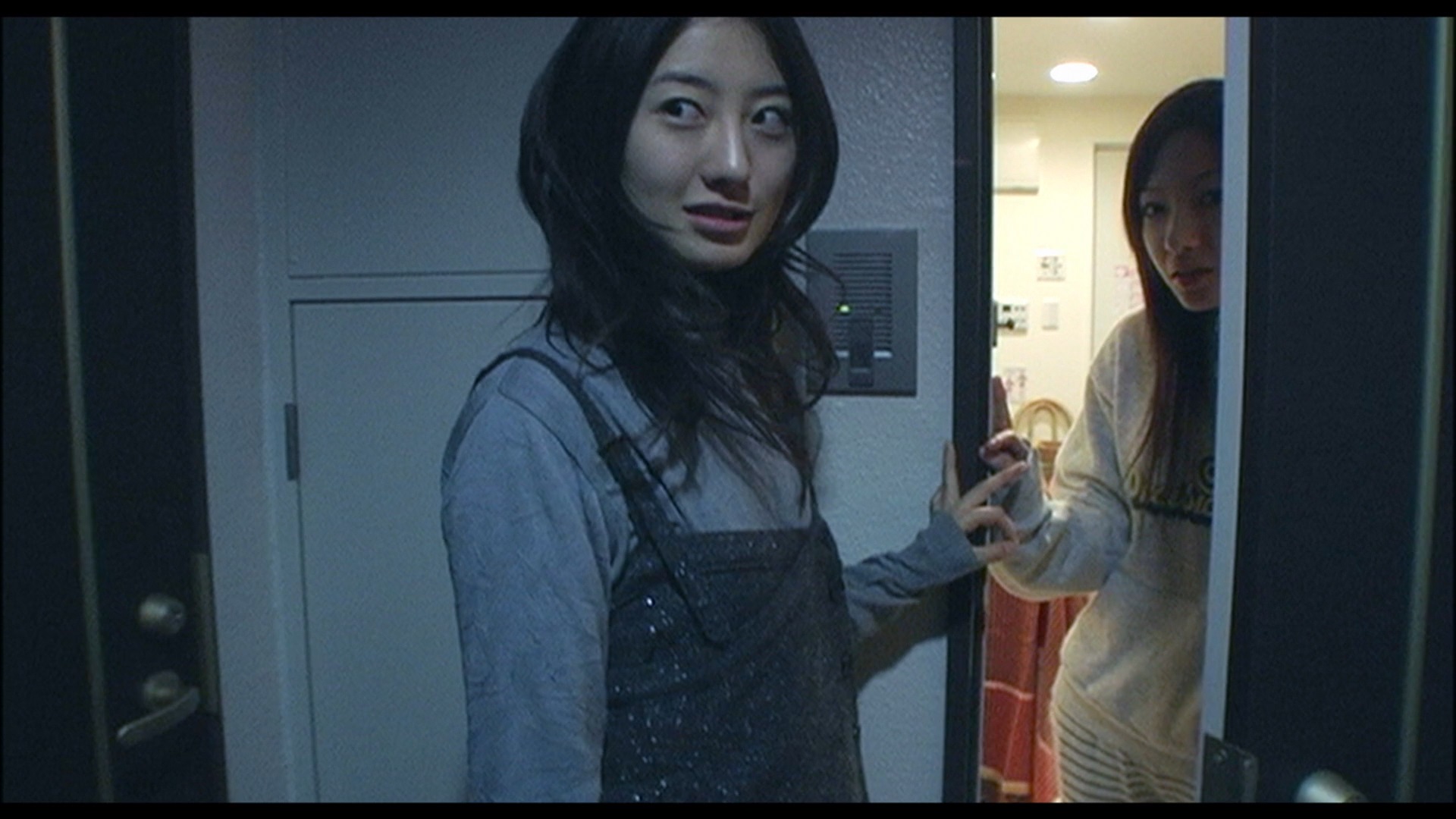 on genre classification. Also included are image galleries for both films, with two for Carved (production stills and behind the scenes)
on genre classification. Also included are image galleries for both films, with two for Carved (production stills and behind the scenes)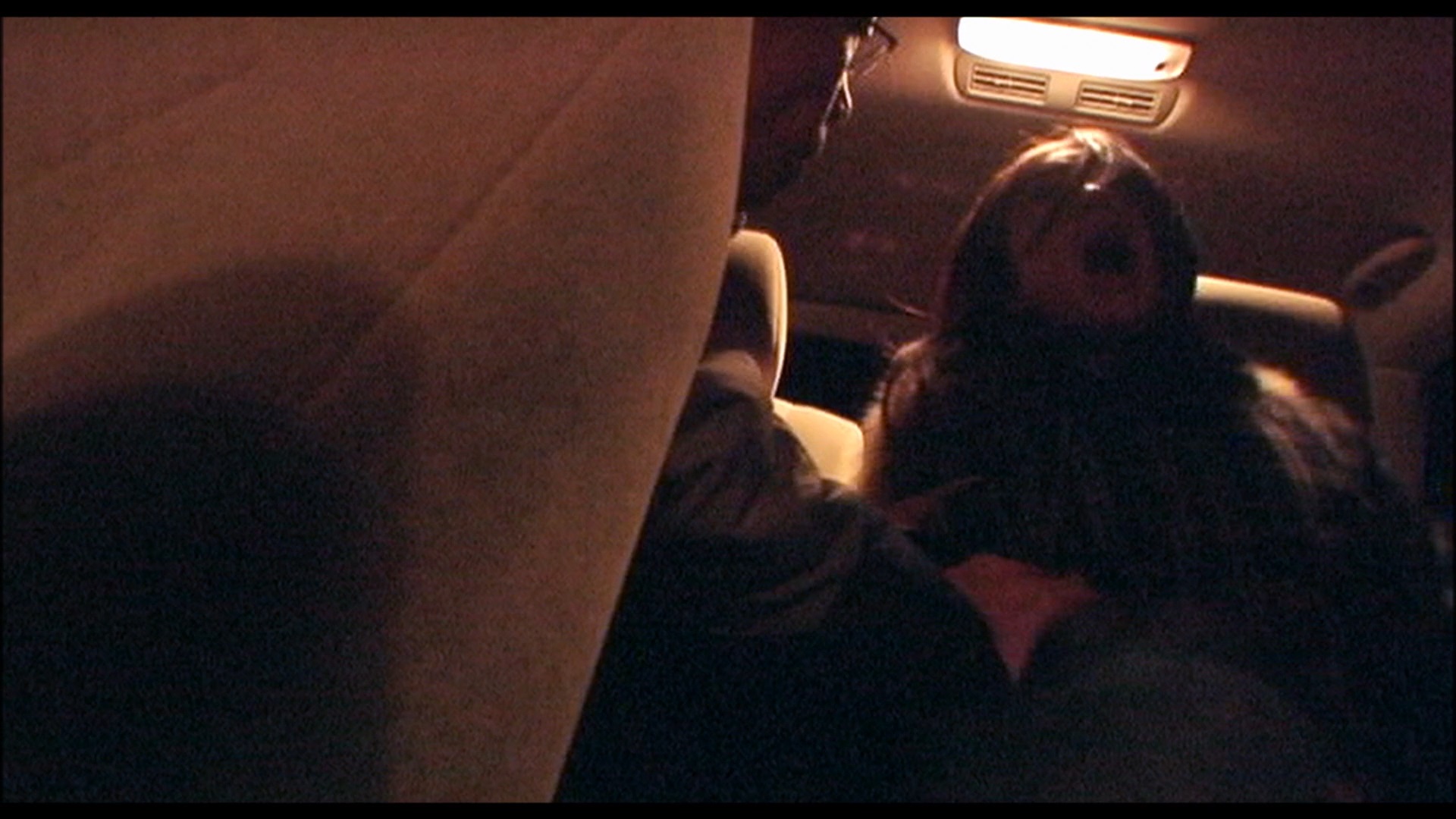 Finally disc four is devoted entirely to 2005's Noroi: The Curse, our one excursion here into that other big horror craze at the time, found footage. The biggest fan favorite of the set, it's presented as the existing material from a documentary being made by paranormal documentarian Masafumi Kobayashi (Muraki) with the participation of real-life actress Marika Matsumoto, a fun Ghostwatch-style touch. The initial subject is a mysterious woman named Junko Ishii and her son, whose home was the subject of rumors involving the recurring sounds of crying infants. A chain of bizarre clues involving dead birds, numerous human disappearances and suicides, and local rituals point to the involvement of a demon called Kagutaba. We know at the beginning that a large fire erupted and Kobayashi has disappeared, but the circumstances behind it all are on a much larger scale than imagined.
Finally disc four is devoted entirely to 2005's Noroi: The Curse, our one excursion here into that other big horror craze at the time, found footage. The biggest fan favorite of the set, it's presented as the existing material from a documentary being made by paranormal documentarian Masafumi Kobayashi (Muraki) with the participation of real-life actress Marika Matsumoto, a fun Ghostwatch-style touch. The initial subject is a mysterious woman named Junko Ishii and her son, whose home was the subject of rumors involving the recurring sounds of crying infants. A chain of bizarre clues involving dead birds, numerous human disappearances and suicides, and local rituals point to the involvement of a demon called Kagutaba. We know at the beginning that a large fire erupted and Kobayashi has disappeared, but the circumstances behind it all are on a much larger scale than imagined.  could -- and that 5.1 track is a manipulative wonder at times. Julian Singleton contributes the last commentary in the set, and it's another worthy one analyzing the strain of found footage in Japanese cinema, the integration of classical horror ideas into the template, and the elements that would have resonated with local audiences, not to mention the film's legacy as one of the strongest of its ilk. "Director's POV" (25m38s) is a new video interview with director Shiraishi (back again after Carved) about the local history of paranormal documentaries, his approach to building a narrative through various media, and his own background in
could -- and that 5.1 track is a manipulative wonder at times. Julian Singleton contributes the last commentary in the set, and it's another worthy one analyzing the strain of found footage in Japanese cinema, the integration of classical horror ideas into the template, and the elements that would have resonated with local audiences, not to mention the film's legacy as one of the strongest of its ilk. "Director's POV" (25m38s) is a new video interview with director Shiraishi (back again after Carved) about the local history of paranormal documentaries, his approach to building a narrative through various media, and his own background in 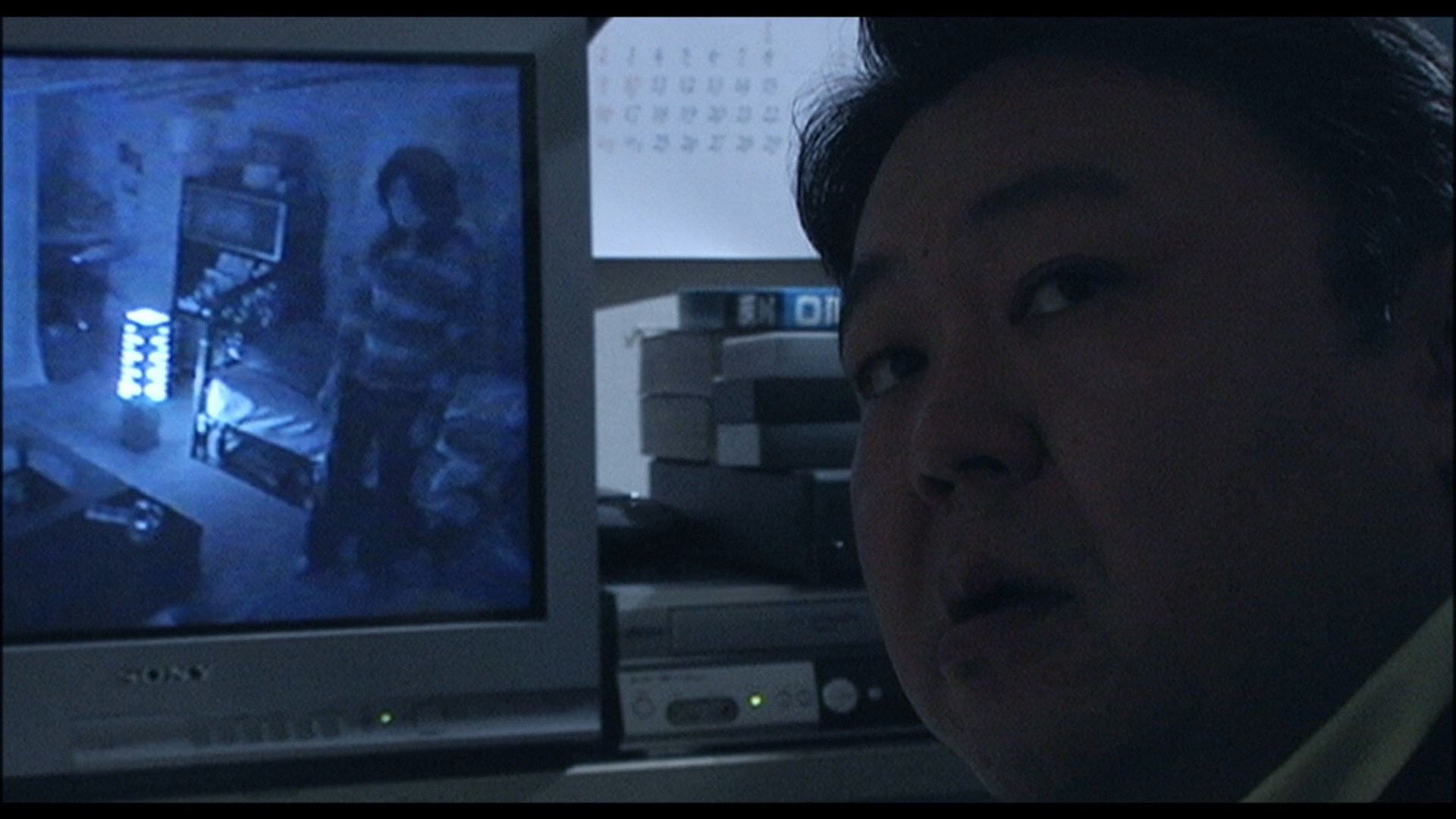 that market for home video. Then "The Man in the Shadows" (17m48s) features producer Taka Ichise going into his dense history with the Japanese horror scene during its height and the origins with adapting Ring. "Changing Perspective" (21m56s) is a new video essay by Nelson honing in on the state of the J-horror craze tapering out around that time and the way found footage worked its way into this entry. In "Ectoplasmic Worms" (20m32s), Amber T. goes in front of the camera this time discussing the cosmic and existential horrors embedded in this film, the Japanese and international influences at play, and the importance of this film within the director's work. Also included are 13 deleted scenes (coming up to over 30 minutes in total), a teaser, trailer, three TV spots, and image gallery, and two fun ballyhoo featurettes in the same vein as the ones conjured up to plug The Blair Witch Project: "How to Protect Yourself Against Curses" (13m35s) and "Urgent Report! Pursuing the Truth about Kagutaba!! TV Special" (38m11s).
that market for home video. Then "The Man in the Shadows" (17m48s) features producer Taka Ichise going into his dense history with the Japanese horror scene during its height and the origins with adapting Ring. "Changing Perspective" (21m56s) is a new video essay by Nelson honing in on the state of the J-horror craze tapering out around that time and the way found footage worked its way into this entry. In "Ectoplasmic Worms" (20m32s), Amber T. goes in front of the camera this time discussing the cosmic and existential horrors embedded in this film, the Japanese and international influences at play, and the importance of this film within the director's work. Also included are 13 deleted scenes (coming up to over 30 minutes in total), a teaser, trailer, three TV spots, and image gallery, and two fun ballyhoo featurettes in the same vein as the ones conjured up to plug The Blair Witch Project: "How to Protect Yourself Against Curses" (13m35s) and "Urgent Report! Pursuing the Truth about Kagutaba!! TV Special" (38m11s).![]()